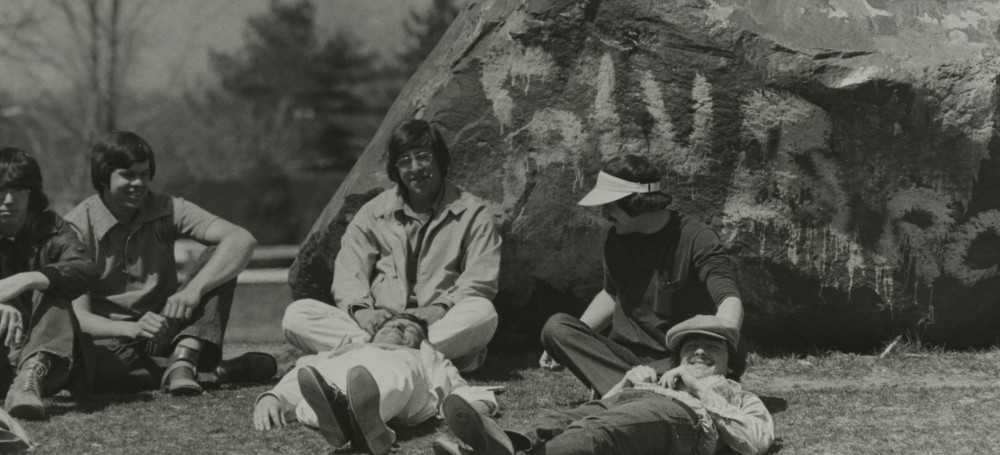Books and screens – the two things that provide all of the information you need when going to the library. Over the decades, however, one has become the more desirable means for most. Last week we saw how the library looked without screens. Today, we’ll look at how screens, in the shape specifically of computer screens, slowly took over the landscape of the library.
As we saw in our last blog post, the library looked like an entirely different world without screens. Students studied at tables with books by lamplight. They looked up information in a card catalog. And they composed their assignments with pen and paper.
Churchill Library, which served as the campus library from 1962 until 1982, existed as a screen free space during its 20 years of service. When D’Amour Library opened its doors in 1983, it too was screen free for over 10 years. It wasn’t until 1995, in fact, that the campus was wired for the internet and computers with internet access could be used by students in Churchill Hall. By 1998, D’Amour Library had 8 computer work stations available for student use, and was providing access to online resources such as Encyclopedia Britannica online, various periodical indexes, and WILDPAC, the library’s online catalog of books, which we still use today.
In a little more than 20 years, the amount of information online has exploded, and so have the amount of computers available in the library to access this information, thus forever changing the way students do research.
In 2005 an addition to the library made space for the library’s first computer lab, the Digital Learning Center. And as recently as 2016, the Business Analytics Center, another computer lab, was opened in the library. There are now over 100 desktop computer available throughout the library!










